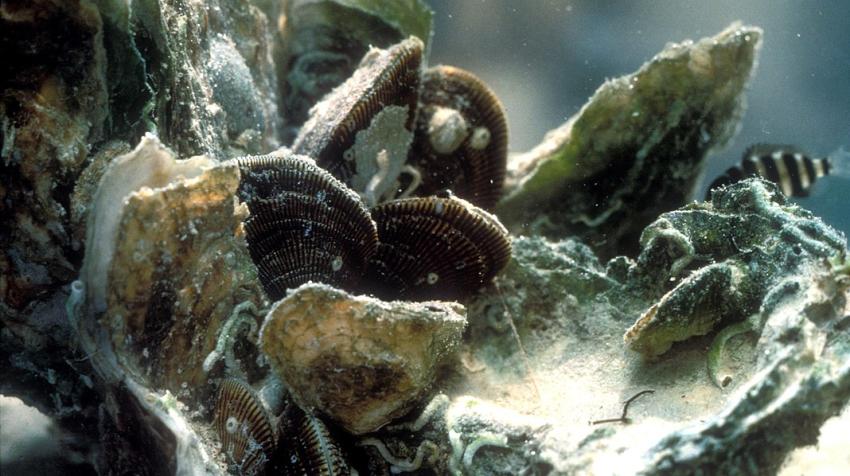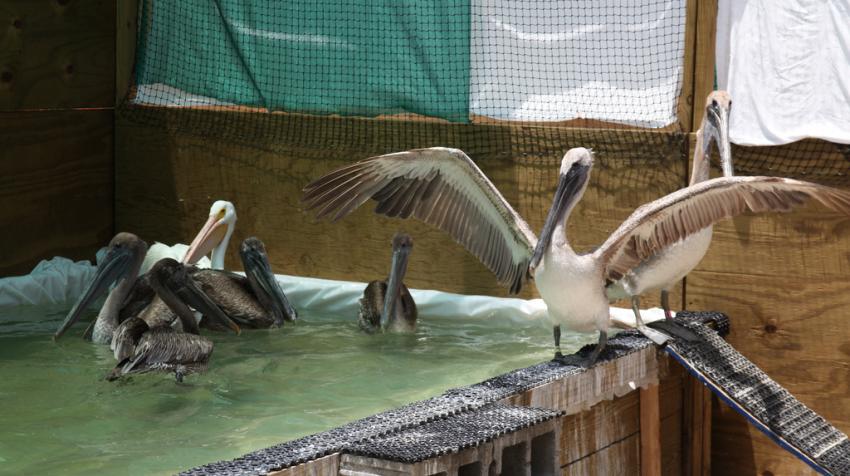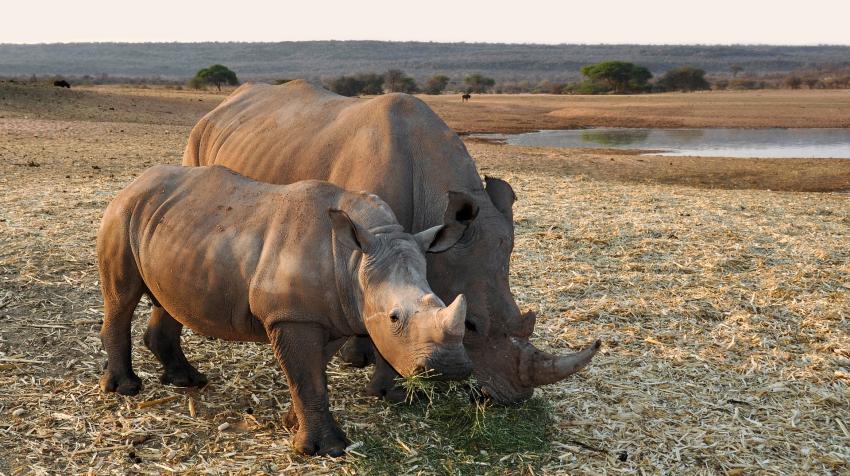This year’s observance of World Wildlife Day—3 March 2022—focuses on the recovery of key species and the restoration of the planet’s ecosystems. This important theme provides us with the opportunity to reflect on restoration actions and impact so far, and how we can and must support people and nature in the future.
From forests to farmlands, mountains to oceans, our ecosystems, both modified and natural, provide multiple environmental, economic and social benefits for people and for nature. Our forests support an estimated 80 per cent of all amphibian species, 75 per cent of all bird species and 68 per cent of all mammal species. Our freshwater bodies are home to an estimated one third of vertebrate species and 10 per cent of all known species. Mountain ecosystems host roughly half of the world’s biodiversity hotspots, while our oceans provide 99 per cent of the world’s living space. These diverse ecosystems and their species provide us with a range of essential ecosystem services—from biodiversity and climate change adaptation and mitigation, to support for our economies, health and security.
However, these ecosystems and their ability to deliver these ecosystem services are being damaged, degraded and destroyed, which directly impacts people and nature. Between 2015 and 2020, we lost approximately 10 million hectares of forests per year,1 and globally more than two thirds of our ocean ecosystems are now damaged, degraded or modified.2 On a finer scale, the International Union for Conservation of Nature (IUCN) Red List of Threatened Species lists over 8,400 species as critically endangered and nearly 30,000 species as endangered or vulnerable.
This loss of ecosystems and species leads to the loss of benefits for people and nature. From an economic perspective, it is estimated that $10 trillion in global GDP could be lost by 2050 if ecosystem services continue to decline. One third of commercial fish stocks are now overfished,3 which threatens the livelihoods of over 60 million fishers globally.4 Furthermore, an estimated 1.4 billion livelihoods, ranging from food and drinks to energy and water, are directly reliant on access to fresh water.5
We need healthy and productive ecosystems to benefit from the multiple environmental, economic and social benefits they provide. Ecosystem restoration offers the opportunity to effectively halt and reverse degradation, improve ecosystem services and recover biodiversity. It is estimated that 60 per cent of expected species extinctions could be avoided through the effective restoration of 15 per cent of converted lands.6 Furthermore, the protection of existing intact ecosystems and the restoration of degraded ecosystems has the potential to contribute to over one third of total climate change mitigation required by 2030.

Around the world there are a growing number of examples of the environmental, economic and social benefits of restoring ecosystems and species. In Mobile Bay, Alabama, United States the restoration of oyster reefs led to a 53–91 per cent reduction in wave height and energy at the shoreline, while the local economy has benefited from improved seafood and greater fish stocks.7 And, looking forward, the Great Green Wall initiative aims to combine restoration of 100 million hectares of degraded land with the promotion of peace and security across the Sahel.
This year will feature various crucial political moments to compel and catalyse action for the recovery of our key species and the restoration of our ecosystems, including meetings on the post-2020 Global Biodiversity Framework, the United Nations Convention on the Law of the Sea and Stockholm+50, among others. Discussions, commitments and implementation throughout the year will contribute towards the recovery of species and ecosystems, as well as the achievement of multiple international goals and targets. Such efforts align directly with the ambition and vision of the UN Decade on Ecosystem Restoration, set to run until 2030. Stemming from strong political will and backed by the private sector, non-governmental organizations, scientists and practitioners, this campaign aims to build a new global momentum around the core ambition of ecosystem restoration at regional, national and global scales.
This is also a key year for several other pivotal International Decade campaigns aimed at supporting the recovery of species and ecosystems. The United Nations Decade of Ocean Science for Sustainable Development, for example, calls upon actors to address the degradation of our ocean and coastal ecosystems and improve science for decision-making. The International Decade for Action on Water for Sustainable Development drives us forward on the conservation, management and restoration of our freshwater ecosystems and its unique freshwater flora and fauna. And, overarchingly, the Decade of Action for the Sustainable Development Goals (SDGs) compels us to deliver on the 2030 Agenda for Sustainable Development and the full breadth of SDGs.
All of these efforts demonstrate how the international community is working to ensure positive outcomes for people and nature at the same time, and everyone has a role to play. From local efforts to plant trees and restore intricate waterways, to immense multinational restoration efforts that involve huge swathes of our land and seascapes, there is an opportunity for us all to act now to support, engage and implement impact.

United Nations Environment Programme World Conservation Monitoring Centre
To enable global transformation to a sustainable future, the United Nations Environment Programme World Conservation Monitoring Centre (UNEP-WCMC) provides strategic leadership, technical expertise and evidence-based support to our partners on effective ecosystem restoration and species recovery. We aim to support the global community through legal, policy and planning frameworks that can scale-up efficient action to achieve restoration ambitions at local to global scales; support and deliver an accessible knowledge base allowing planners and practitioners to prioritize effective restoration efforts that deliver measurable, long-term environmental, social and economic benefits; and support monitoring to track and incentivize effective global restoration efforts and enhance adaptive management.
Notes
1 Food and Agriculture Organization of the United Nations (FAO) and the United Nations Environment Programme (UNEP), The State of the World’s Forests 2020. Forests, biodiversity and people Rome, 2020), p. 13. Available at: https://doi.org/10.4060/ca8642en
2 Intergovernmental Science-Policy Platform on Biodiversity and Ecosystem Services (IPBES), Eduardo Sonnewend Brondízio and others, eds., Global assessment report of the Intergovernmental Science-Policy Platform on Biodiversity and Ecosystem Services (Bonn, Germany, IPBES, 2018), p. XXVIII. Available at https://www.ipbes.net/global-assessment
3 Food and Agriculture Organization of the United Nations (FAO), The State of World Fisheries and Aquaculture 2020. Sustainability in action. (Rome, 2020), p. 54. Available at: https://doi.org/10.4060/ca9229en
4 Ibid., p. 146
5 United Nations, Sustainable Development Goal 6 Synthesis Report 2018 on Water and Sanitation. Executive Summary, p. 12. Available at: https://www.unwater.org/app/uploads/2018/05/UN-Water_SDG6_Synthesis_Report_2018_Executive_Summary_ENG.pdf
6 Bernardo B.N. Strassburg and others, “Global priority areas for ecosystem restoration”, Nature 586(7831), 724-729. Available at: https://doi.org/10.1038/s41586-020-2784-9
7 Timm Kroeger, “Dollars and Sense: Economic Benefits and Impacts from two Oyster Reef Restoration Projects in the Northern Gulf of Mexico”, The Nature Conservancy, 2012, p.7. Available at: http://www.oyster-restoration.org/wp-content/uploads/2013/02/oyster-restoration-study-kroeger.pdf
The UN Chronicle is not an official record. It is privileged to host senior United Nations officials as well as distinguished contributors from outside the United Nations system whose views are not necessarily those of the United Nations. Similarly, the boundaries and names shown, and the designations used, in maps or articles do not necessarily imply endorsement or acceptance by the United Nations.




